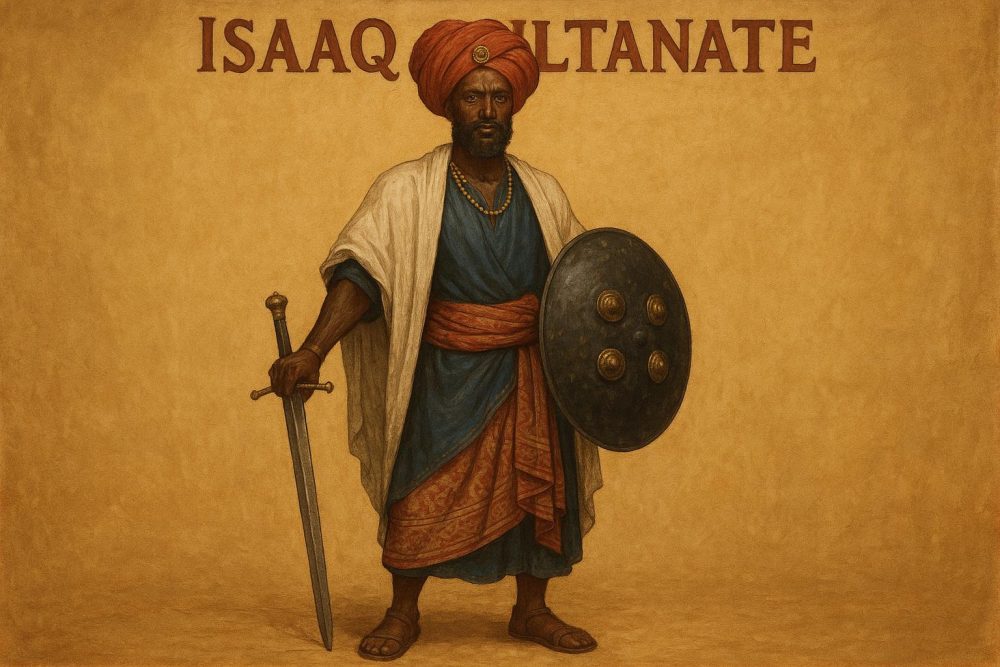
History and Establishment
The Isaaq Sultanate was a notable pre-colonial Somali sultanate established during the mid-18th century. Founded by the influential Isaaq clan, which represents one of the major Somali clans, the sultanate emerged as a significant political entity in the Horn of Africa. The foundation of the sultanate had its roots primarily in the area we now recognize as Somaliland. Although Somaliland considers itself a self-declared republic, the broader international community recognizes it as an autonomous region of Somalia.
Geographic Influence
The geographic span of the Isaaq Sultanate was extensive. It primarily covered the contemporary regions of Woqooyi Galbeed, Togdheer, Sahil, and parts of Sanaag and Sool. The central location of the sultanate enabled it to establish and maintain connections and trade routes throughout the region. These pathways not only influenced inland territories but also extended to coastal areas, impacting diverse communities. Furthermore, its strategic position enabled trade relations that spanned various regions, including those across the Red Sea.
Political Structure
The political structure of the Isaaq Sultanate was unique in its clan-based nature. At the helm was the Sultan, an individual often chosen based on lineage as well as the consensus among prominent clan leaders. This system allowed for a democratic element in decision-making processes, as the clan leaders fulfilled an advisory role to the Sultan. This advisory culture ensured that the Sultan’s position went beyond ceremonial duties, encompassing leadership in times of war, settlement of disputes, and maintenance of alliances.
Economic Activities
Economically, the Isaaq Sultanate flourished through various activities. Chief among these was the rearing of livestock, a vital economic pursuit among Somali pastoralists that continues to thrive today. Additionally, the sultanate’s geographical proximity to the coast facilitated its active participation in trade. By establishing extensive trade routes, the sultanate connected with entities on the Arabian Peninsula and beyond. In these exchanges, the Sultanate traded local products such as livestock, hides, and frankincense for imported items like textiles and grains.
Legacy and Influence
The legacy of the Isaaq Sultanate exerts significant influence on present-day Somali society, with a particularly profound impact in Somaliland. Traditional leadership structures and clan systems, which were initiated during the sultanate’s existence, continue to feature prominently in the social and political fabric of the region. This historical context serves as a lens through which to understand the governance models currently employed within the autonomous framework of Somaliland.
For those interested in a deeper exploration of the Isaaq Sultanate’s historical influence, a wealth of information is available. Historical records and scholarly articles can be accessed through academic archives, focusing on the Horn of Africa. These sources provide comprehensive insights into the sultanate’s historical significance and its contributions to the region’s cultural heritage, offering a detailed understanding of the interplay between past and present political and social structures.
Understanding the history of the Isaaq Sultanate provides a clearer picture of the evolution of social and political systems in this part of the world. It highlights the adaptive nature of Somali clans in facing challenges over centuries, as well as their resilience in maintaining cultural identity amidst foreign influences. The development of the sultanate was not an isolated event but rather a pivotal chapter in a broader narrative that includes complex interactions with neighboring societies and distant trading partners.
As we look at the current political climate of Somaliland, the historical infrastructures laid down by the Isaaq Sultanate are evident. The clan leaders’ advisory roles reflect traditional governance practices, while modern adaptations ensure a degree of democracy and local representation. The region’s contemporary leaders draw upon these time-honored methods to address current issues, administrating an area that seeks both autonomy and recognition on the international stage.
This enduring influence raises pertinent questions about the importance of historical governance systems in shaping contemporary political entities. The interplay between past and present offers valuable lessons on stability, negotiation, and governance, as evident in the peaceful pursuit of autonomy within Somaliland. The Isaaq Sultanate exemplifies how historical precedents can inform the governance strategies of today, providing a significant basis for future development agendas.
The economic activities that sustained the sultanate also provide insight into how the region balances tradition and progress. Livestock rearing, allied with strategic trade practices, underscored economic resilience in the Sultanate—an ethos that continues in current economic strategies. Today’s Somaliland economy draws heavily from these historical practices, integrating them with modern trade and commerce demands.
Ultimately, the study of the Isaaq Sultanate is an exploration of cultural and historical depth, illustrating the persistence of tradition even amid modernizing influences. Its legacy serves as a living testament to the enduring strength and adaptability of Somali societies, influencing current practices and hopes for a peaceful, prosperous future in the region. Exploring this rich history offers a clearer understanding of cultural continuity and the prolonged significance of traditional governance and social structures in shaping today’s political landscape.